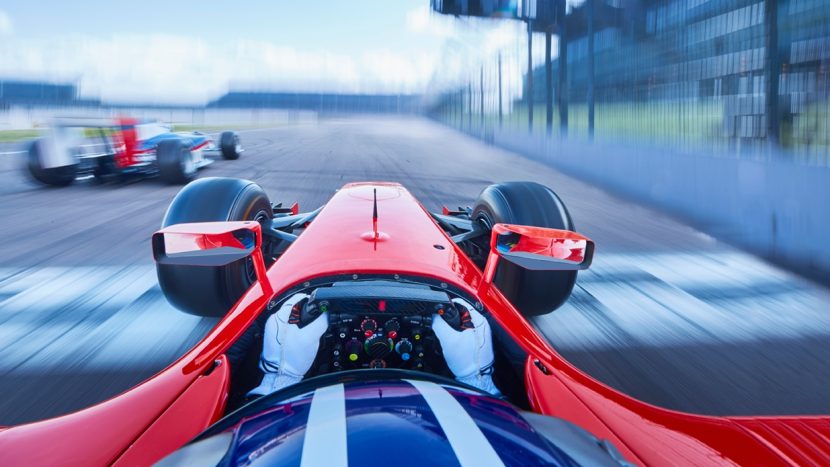Doha, Qatar CNN — With Formula One vehicles speeding around Lusail International Circuit at typical speeds well above 130 miles per hour (210 kilometers per hour), the Qatar Grand Prix concluded in just over 90 minutes. Yet as the checkered flag is waved and the Doha skyline is illuminated by fireworks, hundreds of crew members […]

Doha, Qatar
CNN
—
With Formula One vehicles speeding around Lusail International Circuit at typical speeds well above 130 miles per hour (210 kilometers per hour), the Qatar Grand Prix concluded in just over 90 minutes.
Yet as the checkered flag is waved and the Doha skyline is illuminated by fireworks, hundreds of crew members hustle around the 10 separate team garages, embarking on their own race to relocate the entire setup to Abu Dhabi within days for the upcoming Grand Prix.
In a precisely coordinated sport that comprises 24 races, spans 21 countries and five continents over nine months in 2024, this presents a singularly complex logistical endeavor, made even more challenging by the extensive fan, hospitality, and entertainment activities that follow suit.
“We refer to it as the circus. It truly is a traveling family,” F1 chief communications and corporate relations officer Liam Parker shared with CNN.
“We’re everywhere, and that’s what adds to its uniqueness. It’s genuinely a global sporting extravaganza … It’s no longer just about racing – it’s entertainment, it’s music, it’s celebrity.”
Even after ten years of covering the sport, PA Media’s F1 correspondent Phil Duncan continues to be astounded by the ways teams manage.
“We’re discussing upwards of 4,000 individuals (team personnel) moving to various races,” Duncan reported to CNN.
“The way they manage to move all the people globally, along with the equipment, cars, machinery, and parts – it’s quite an extraordinary accomplishment.”

Pressure
So, taking the Qatar Grand Prix as an example, how exactly do they accomplish this?
It’s certainly not about getting ample rest, asserts Aston Martin race team coordinator Joe Micklewright, a former sous chef whose extensive duties during race week commenced the moment he touched down – bleary-eyed – in Doha on Monday after a 17-hour flight.
Lusail International Circuit represented the midpoint of a triple-header – three consecutive race weekends – completing the 2024 season, flanked by Las Vegas and the season finale in Abu Dhabi on December 8.
After managing to grab a few hours of sleep, Micklewright rose Tuesday morning to meet the air freight featuring around 25 tons of critical cargo – including the two cars – that he had organized to follow him approximately 8,000 miles from the US.
And that doesn’t even account for enough tables, chairs, and other less essential garage essentials to fill five different shipping containers that are delivered via sea freight. Aston Martin rotates six sets of such containers globally to ensure timely arrival at all 24 races, with the Doha shipment already on its way to Australia for the 2025 season opener in March.
All of this amounts to around 50 tons of equipment transported to each Grand Prix by every team.

With such pressing timelines – including a firm curfew that limits staff working hours on the cars on Wednesday and Thursday during race week (around 12 hours each day) – even the slightest travel hiccup can be severely disruptive.
“There is indeed a substantial amount of pressure,” remarked Micklewright, noting that a customs delay resulted in the air freight arriving nearly four hours late in Doha.
“We need to ensure that the correct equipment is delivered to the appropriate location on time, and our paperwork has to be impeccable. Failing this leads to delays which constantly ripple through our operations.”
The assembly of the cars, each consisting of approximately 5,000 components, initiates on Wednesday as the garage is constructed around them to be fully operational by Thursday.
During Friday, Saturday, and Sunday – practice, qualifying, and the Grand Prix respectively – Micklewright is part of the team responsible for managing driver Fernando Alonso’s tires, even participating in pit stops if necessary.
This position is merely one aspect of his extensive job description, with Micklewright’s responsibilities also encompassing garage maintenance, addressing any spontaneous team issues related to accommodations or vehicle rentals, and coordinating with some of the roughly 800 personnel back at team headquarters in Silverstone, England.
As jet lag amplifies the ordinary exhaustion that comes with a globe-trotting schedule that commenced in earnest with the launch of the 2024 car in February, relying on the support of the “traveling family” becomes essential.
“It does weigh on you, particularly as the season comes to a close. You can become quite fatigued,” Micklewright confessed.
“When circumstances aren’t favorable, you must stick together, support one another, and ensure you push through. You have to keep moving forward.”
‘There’s no better feeling’
This feeling is echoed by Micklewright’s logistical counterpart at rival team Haas, trackside operations manager Neil Hanley.
With fewer than 300 total staff across England, Italy, and the US, Haas is the smallest team on the grid, according to Hanley, who starts preparing garage schematics six weeks prior to each race.
Such advanced planning is crucial given their limited workforce, but what Haas – presently seventh in the Constructors’ Championship – might lack in numbers, it compensates with spirit and friendship, Hanley asserts.
“They are simply an outstanding group of individuals,” he remarked to CNN.
“It begins right from our catering team, our logistical providers. Without their efforts, we wouldn’t have achieved our current standings. We wouldn’t secure those points without the dedicated mechanics on site … without the engineering teams, management, engineers, and drivers, if we didn’t function as a unified team.”
“When the checkered flag falls on Sunday evening, if we have one or two cars in the points – there’s no greater satisfaction,” he added.

That flag drop signifies the beginning of a frantic effort to completely dismantle the garage and load all the gear onto their designated freights, a task that sprawled late into the early hours of Monday in Doha.
Approaching the midway point of a “grueling” triple-header, only when Hanley boards a flight headed for Abu Dhabi a few hours later – happily unreachable – can he finally take a breather.
That is until landing, when the circus resumes once more.
“It never stops,” Hanley commented. “We can’t merely consider the hours spent at one race – it’s hundreds, thousands of hours just to get these cars onto the ground. Twelve hours a day, seven days a week at a single event.
“Those watching from their sofas, who don’t have family members or loved ones on a team, likely wouldn’t comprehend the extensive time we dedicate to being on the road.”














